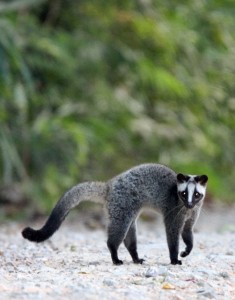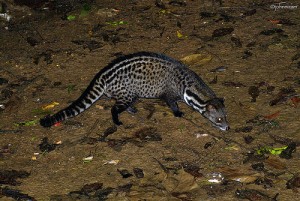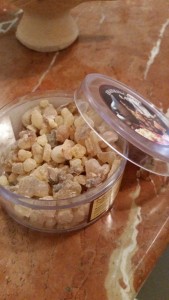World Animal Day is celebrated annually on the 4th of October. It was initiated to promote conservation and awareness efforts for endangered animals, so that members of the public would be aware of the existence of these animals and also the threats that they face. Gradually. World Animal Day evolved into a platform that actively advocates animal welfare, pertaining to all kinds of animals whether endangered or not.
In conjunction with World Animal Day, we’ve decided to take a look back on the existence of different species of the Viverridae family in Singapore. Yes, the common palm civet is part of the Viverridae, but in the past, it was not the only Viverridae species on the island. Due to rapid urbanization, many of these species no longer exist on our island, but there are a few that are still sometimes sighted by nature enthusiasts, such as:

Masked palm civet, Paguma larvata (Smith, 2011)

Large indian civet, Viverra zibetha (Tontantravel, 2014)

Three-Striped palm civet or small toothed palm civet, Arctogalidia trivirgata (Nick Baker, 2015)
These civets are extremely elusive. For example, an image of the Malay civet was captured on a camera trap back in 2012, but no one has actually seen it in the flesh before. The rest of the civet species are restricted to Singapore’s nature reserves and are hardly observed. This shows us how they are, really, not too keen on getting our attention at all and would much rather be left alone. However, it is encouraging to know that there is still a handful of them amongst us, and that they haven’t fully deserted our garden city yet. If you are interested to find out the diversity and status of civets in Singapore, you can read the Chua et. al. (2012) report.
In addition, Singapore also used to be home to other species of the civet family. These include the large spotted civet (Viverra megaspila), small indian civet (Viverricula indica) and binturong (Arctictis binturong). The existence of the binturong on the island is indeterminate, for there was a recent capture of an individual in the Bukit Panjang area in 2004. Furthermore, the sighting of a certain “bear-like creature” in 2010 led to the speculation that the creature might actually be a binturong. Unfortunately, with no conclusive evidence and no subsequent sightings, that speculation was soon tossed out.
While it is sad that these species no longer exist in Singapore, it is also heartening to know that in spite of all the urban and industrial development that Singapore has gone through, the common palm civet’s adaptability has allowed it to survive here in urban Singapore.
However, we must remember that although some of these animals are rarely seen nowadays, we cannot be too quick to dismiss its existence in Singapore. After all, just because we do not see them does not mean that they do not live amongst us. This World Animal Day, let us know if you’ve had sightings of other species of Viverridae before, and maybe, if you’ve got a picture to share, send it over! We are always happy to hear from you. Meanwhile, let us spread the message and spirit of World Animal Day, to always be conscious of the existence of other creatures around us, to respect them and to always be kind towards them.




